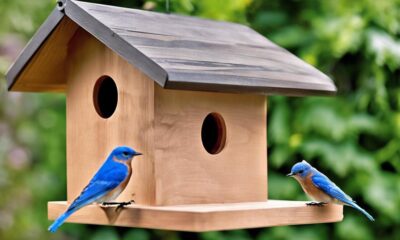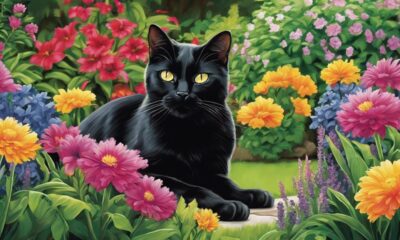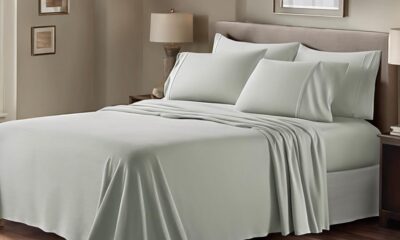Decor
Why Is Chinese New Year or Lunar New Year Not on the Same Day as the Western New Year?
2025
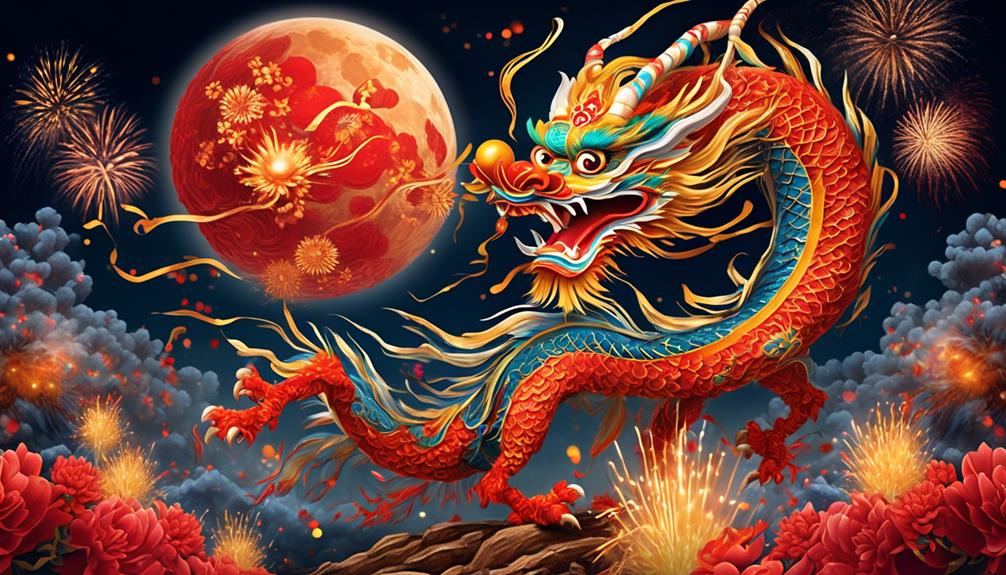
Ever pondered the reason why Chinese New Year, otherwise known as Lunar New Year, isn’t celebrated on the same date as the Western New Year? Allow me to illuminate this intriguing subject for you.
The reason behind this misalignment lies in the fundamental differences between the lunar and solar calendars. While the Gregorian calendar, which is widely used in the Western world, is based on the solar year, the Chinese calendar follows the lunar cycle.
This means that Chinese New Year is determined by the phases of the moon, resulting in its variable date each year. Understanding these unique calculation methods is crucial in unraveling the cultural significance, traditional customs, and global celebration of Chinese New Year.
So, let's dive deeper into this captivating subject and explore the intriguing reasons behind the timing of this festive occasion.
Key Takeaways
- Chinese New Year follows the lunar calendar, while Western New Year follows the solar calendar.
- Lunar calendar is based on the cycles of the moon, while the solar calendar is based on the Earth's orbit around the sun.
- Lunar calendar's accuracy allows for precise determination of the date of Chinese New Year, while the solar calendar's predictability makes it easier to plan events for Western New Year.
- Chinese New Year falls on a different date each year as the lunar calendar consists of approximately 354 days and adds an extra month to align with the solar year.
Lunar Vs. Solar Calendars
When comparing Chinese New Year and Western New Year, one notable difference lies in the use of lunar and solar calendars, respectively. Chinese New Year, also known as Lunar New Year, is based on the lunar calendar, which follows the cycles of the moon. This calendar is known for its accuracy in predicting the dates of celestial events, such as eclipses and meteor showers.
In contrast, Western New Year is celebrated on January 1st, which is determined by the solar calendar. The solar calendar follows the Earth's orbit around the sun and is widely used in the Western world for its practicality and consistency.
The use of lunar and solar calendars has a significant impact on the cultural celebrations associated with each New Year. Chinese New Year is celebrated with great enthusiasm and is marked by traditional customs and rituals that have been passed down through generations. The lunar calendar's accuracy allows for the precise determination of the New Year's date, which is essential for planning these cultural festivities.
On the other hand, Western New Year's celebrations often focus on parties, fireworks, and resolutions, rather than specific cultural traditions. The solar calendar's predictability makes it easier to plan and coordinate these events, as the date remains the same each year.
The Gregorian Calendar and Western New Year
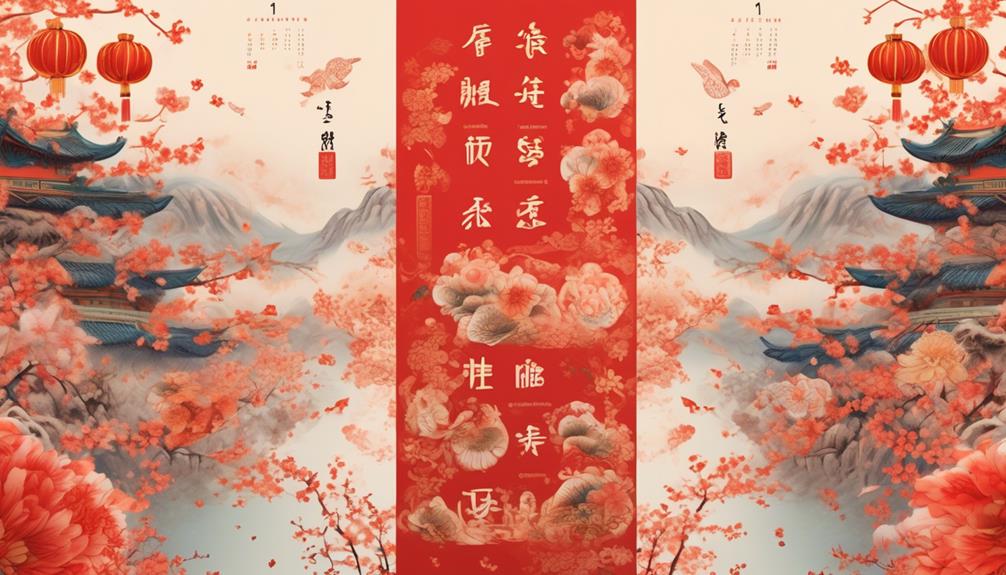
The transition from comparing the use of lunar and solar calendars in Chinese New Year and Western New Year leads us to the significance of the Gregorian Calendar in determining the date of Western New Year. The Gregorian Calendar, also known as the Western or Christian calendar, is a solar calendar introduced by Pope Gregory XIII in 1582. It's widely used in the Western world and has become the standard for measuring time.
One of the main differences in timing between Chinese New Year and Western New Year is the calendar system they follow. While Chinese New Year is based on the lunar calendar, which is determined by the cycles of the moon, Western New Year follows the Gregorian Calendar, which is a solar calendar based on the Earth's orbit around the sun.
The use of the Gregorian Calendar in Western New Year is deeply rooted in cultural traditions. It's celebrated on January 1st, marking the beginning of the new year according to the Gregorian Calendar. This date holds significance in many Western cultures, and it's often associated with resolutions, new beginnings, and reflection on the past year.
The Lunar Calendar and Chinese New Year
Based on the lunar calendar, Chinese New Year is a vibrant and culturally significant celebration that marks the beginning of a new year for the Chinese people. Unlike the Western New Year, which follows the Gregorian calendar, Chinese New Year falls on a different date each year. This is because the lunar calendar is based on the cycles of the moon, which result in a shorter year compared to the solar-based Gregorian calendar.
The lunar calendar is a traditional calendar system used in many Asian countries, including China. It's based on the phases of the moon, with each month beginning on the day of the new moon and ending on the day before the next new moon. This means that a lunar year consists of approximately 354 days, which is about 11 days shorter than a solar year.
To account for this discrepancy, the lunar calendar adds an extra month every few years to bring the lunar year closer to the solar year. This ensures that the lunar festivals, such as Chinese New Year, fall around the same time each year in relation to the solar calendar.
In addition to the lunar calendar, Chinese New Year is also associated with the lunar zodiac. The lunar zodiac is a 12-year cycle, with each year represented by a different animal sign. These animal signs, including the Rat, Ox, Tiger, Rabbit, Dragon, Snake, Horse, Sheep, Monkey, Rooster, Dog, and Pig, are believed to influence the personality traits and fortunes of individuals born in that year.
Differences in Calculation Methods
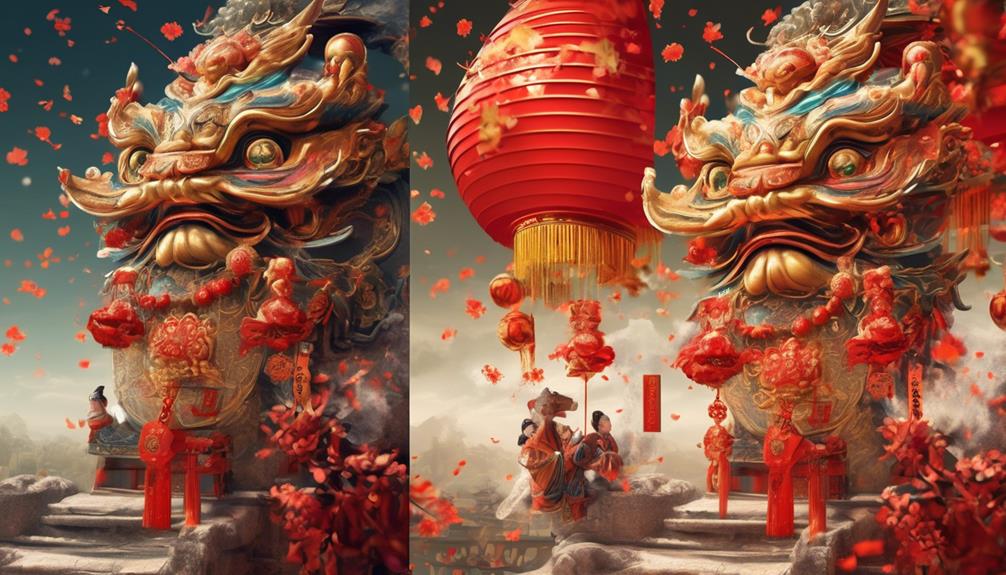
When it comes to calculating the Chinese New Year, the lunar calendar introduces complexities that differ from the Western Gregorian calendar.
Astronomical calculations play a crucial role in determining the exact date, taking into account the moon's movements and phases.
However, the calculation methods aren't solely based on science, but also influenced by cultural and historical factors.
These differences in calculation methods contribute to the unique traditions and celebrations associated with Chinese New Year.
Lunar Calendar Complexities
Calculating the lunar calendar for Chinese New Year and Western New Year involves intricate methods that vary in complexity and precision. The lunar calendar, which is based on the cycles of the moon, requires adjustments to keep it in sync with the solar calendar used in the West. These adjustments are necessary to ensure that the lunar festivals, such as Chinese New Year, fall on the correct dates each year.
Here are three key differences in calculation methods between the lunar calendar and the Western calendar:
- Lunar Leap Months: Unlike the Western calendar, which adds an extra day every four years for leap year, the lunar calendar adds an entire extra month every few years. This helps to account for the difference in the length of the lunar and solar cycles.
- Moon Phases: The lunar calendar is based on the phases of the moon, with each month beginning on the day of the new moon. This differs from the Western calendar, which follows a fixed pattern of months and doesn't take into account the moon phases.
- Solar Terms: The lunar calendar also incorporates the 24 solar terms, which are based on the position of the sun in relation to the Earth. These solar terms help to determine the changing seasons and agricultural activities, and they aren't considered in the Western calendar.
Understanding these complexities in calculation methods allows us to appreciate the precision and cultural significance behind the lunar festival traditions, such as Chinese New Year.
Astronomical Calculations Involved
To understand the complexities of astronomical calculations involved in determining the dates of Chinese New Year and Western New Year, it is important to delve into the intricate methods used for aligning the lunar and solar calendars. The ancient calendars of China and the West were based on different principles, leading to variations in calculating the new year. In Chinese tradition, the lunar calendar is used, which is based on the cycles of the moon. The Chinese New Year is determined by celestial movements and the position of the sun and moon. On the other hand, the Western calendar follows the solar calendar, which is based on the Earth's orbit around the sun. The two calendars have different starting points and methods of determining the new year, resulting in the discrepancy between the dates of Chinese New Year and Western New Year.
| Chinese Lunar Calendar | Western Solar Calendar |
|---|---|
| Based on the moon's cycles | Based on the Earth's orbit around the sun |
| Determined by celestial movements | Determined by the position of the sun |
| Different starting point | Starts on January 1st |
| Variations in calculation methods | Consistent calculation method |
These differences in calculation methods highlight the intricate nature of aligning the lunar and solar calendars and explain why Chinese New Year and Western New Year do not fall on the same day.
Cultural and Historical Factors
As we explore the cultural and historical factors behind the differences in calculation methods for Chinese New Year and Western New Year, we gain insight into the intricate ways these two traditions have evolved over time.
The lunar calendar accuracy plays a significant role in determining the dates for Chinese New Year. Unlike the Western calendar, which is based on the solar year, the Chinese calendar is a lunisolar calendar, meaning it combines both lunar and solar calculations. This unique approach allows for the inclusion of intercalary months to keep the lunar and solar cycles aligned.
Additionally, cultural adaptations have influenced the calculation methods for Chinese New Year. Different regions in China have their own traditions and customs, resulting in slight variations in the dates of celebration. These cultural adaptations showcase the diversity and richness of Chinese New Year celebrations across different communities.
Cultural Significance of Chinese New Year
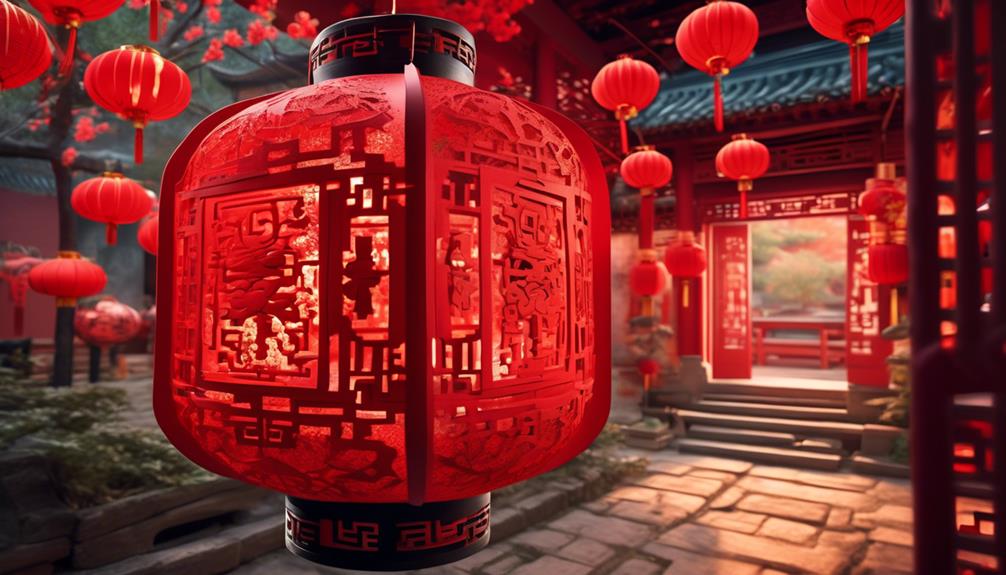
The cultural significance of Chinese New Year can be seen in its rich traditions and vibrant celebrations. This festive occasion is deeply rooted in Chinese culture and holds great importance for the Chinese community around the world. Traditional practices and customs are observed during this time, creating a sense of unity and renewal.
One of the most iconic traditions of Chinese New Year is the reunion dinner, where families gather to enjoy a lavish feast. This meal symbolizes the coming together of loved ones and the importance of family ties. Another significant tradition is the giving of red envelopes, known as "hongbao," which contain money and are given to children and unmarried adults as a symbol of good luck and blessings for the year ahead.
To further understand the cultural significance of Chinese New Year, let's take a closer look at some of its festive traditions:
| Tradition | Description |
|---|---|
| Lion and Dragon Dances | Colorful and energetic performances featuring lions and dragons, believed to bring good luck and scare away evil spirits. |
| Fireworks | Spectacular displays of fireworks to ward off evil spirits and welcome the new year with a bang. |
| Spring Couplets | Red banners with auspicious phrases, displayed on doors to bring good fortune and blessings to the household. |
| Temple Visits | A visit to temples during Chinese New Year to pray for blessings and pay respects to ancestors. |
These traditions not only add to the joyous atmosphere of the festivities but also reflect the cultural values and beliefs of the Chinese people. Chinese New Year is a time of renewal, gratitude, and hope, symbolizing the start of a new chapter filled with prosperity and happiness.
Traditional Customs and Rituals
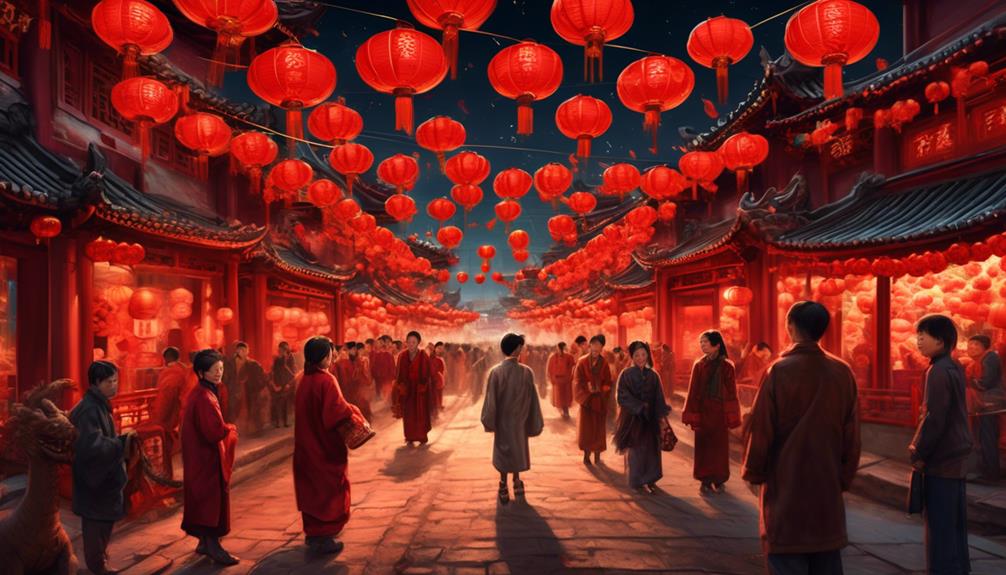
When it comes to traditional customs and rituals, Chinese New Year and Western New Year have distinct differences.
Chinese New Year is deeply rooted in historical background, symbolizing the beginning of a fresh start and the honoring of ancestors. From the iconic lion and dragon dances to the vibrant red decorations, every ritual has its own significance.
On the other hand, Western New Year celebrations are often centered around parties, fireworks, and the countdown to midnight, symbolizing the transition from one year to the next. These customs reflect the cultural nuances and values of each respective tradition.
Historical Background
Throughout history, both Chinese New Year and Western New Year have been celebrated with rich and diverse traditional customs and rituals.
The lunar calendar origins of Chinese New Year date back thousands of years, with its traditions deeply rooted in ancient Chinese culture. On the other hand, Western New Year is based on the Gregorian calendar, which was introduced by Pope Gregory XIII in 1582.
While Chinese New Year is marked by vibrant lion and dragon dances, fireworks, and the exchange of red envelopes, Western New Year is celebrated with parties, countdowns, and fireworks displays.
The customs and rituals of both celebrations reflect the unique cultural and historical backgrounds of the respective regions.
Despite the differences, both Chinese New Year and Western New Year are occasions for renewal, reflection, and celebration.
Symbolism and Significance
Celebrating the arrival of a new year, both Chinese New Year and Western New Year showcase their unique symbolism and significance through a myriad of traditional customs and rituals. Symbolism plays a crucial role in both celebrations, but their meanings differ greatly.
In Chinese culture, the lunar calendar is used to determine the date of the Chinese New Year, emphasizing the connection to the moon and its cycles. This lunar tradition represents renewal and rebirth, as the moon goes through phases just like the year does. The Chinese New Year is also associated with specific animal symbols, with each year being represented by a different animal from the Chinese zodiac. These animals hold symbolic meanings, reflecting certain qualities and characteristics that are believed to influence the year ahead.
In contrast, the Western New Year is often symbolized by fireworks, parties, and the iconic dropping of the ball in Times Square. While both celebrations mark the beginning of a new year, they do so in distinctly different ways, reflecting the cultural and historical contexts in which they originated.
Global Celebration and Adaptations

During both Chinese New Year and Western New Year, various cultures around the world come together to celebrate and adapt their own unique traditions to the global festivities. The global adaptations and cultural significance of these celebrations highlight the interconnectedness of our diverse societies and the shared human experience.
- Fusion of Traditions: The global celebration of Chinese New Year and Western New Year allows for the fusion of traditions from different cultures. For example, in many Western countries, it has become customary to exchange red envelopes or participate in lion dances during Chinese New Year celebrations. These adaptations not only showcase the cultural diversity but also foster a sense of unity and appreciation for different customs.
- Symbolic Decorations: The use of symbolic decorations during both Chinese New Year and Western New Year has become a global phenomenon. Red lanterns, representing luck and prosperity, can be seen adorning streets and homes across various countries during Chinese New Year. Similarly, the use of fireworks and glittering ornaments during Western New Year celebrations has been adopted by cultures worldwide. These decorations symbolize the renewal of hope and the desire for a prosperous year ahead.
- Shared Festive Spirit: The global celebration of both Chinese New Year and Western New Year creates a festive spirit that transcends borders. People from different cultures come together to enjoy the vibrant parades, cultural performances, and delicious foods associated with these celebrations. The joy and excitement in the air during these festivities serve as a reminder of our shared humanity and the power of cultural exchange.
Frequently Asked Questions
How Are Lunar and Solar Calendars Different From Each Other?
Lunar and solar calendars are different from each other in several ways.
The lunar calendar is based on the cycles of the moon, while the solar calendar follows the position of the sun.
Lunar calendars are shorter than solar calendars because the moon takes about 29.5 days to complete a cycle, while the Earth takes about 365.25 days to orbit the sun.
This difference in length causes the dates of Chinese New Year or Lunar New Year to vary each year compared to the Western New Year.
What Is the Significance of the Gregorian Calendar in Relation to the Western New Year?
The significance of the Gregorian calendar in relation to the Western New Year lies in its historical origins. It was introduced by Pope Gregory XIII in 1582 to replace the Julian calendar. This new calendar aimed to align the date of Easter with the spring equinox.
The Gregorian calendar is a solar calendar, based on the Earth's orbit around the sun. Its introduction brought about a more accurate measurement of time and the establishment of January 1st as the start of the new year.
How Is the Lunar Calendar Used to Determine the Date of Chinese New Year?
The lunar calendar is essential in determining the date of Chinese New Year and other important festivals.
It differs from the Western Gregorian calendar, resulting in a different date each year.
The lunar calendar is based on the cycles of the moon, with each month starting on the day of the new moon.
This means that Chinese New Year falls on a different day each year, typically between January 21 and February 20.
It's fascinating to compare the use of lunar and Gregorian calendars in different cultures.
Are There Any Variations in the Calculation Methods Used to Determine the Date of Chinese New Year?
There are indeed variations in the calculation methods used to determine the date of Chinese New Year. Different lunar calendar methods are employed across different regions and cultures, resulting in slight variations in the date of the celebration.
These variations can be attributed to factors such as the specific calculations used to determine the lunar month and the inclusion of intercalary months.
It's fascinating to explore how these calculation variations contribute to the rich diversity of Chinese New Year traditions worldwide.
Apart From the Date, What Are Some Cultural Traditions and Rituals Associated With Chinese New Year?
Chinese New Year, also known as Lunar New Year, is a vibrant and culturally rich celebration observed by millions around the world. The festival is marked by a wide range of traditions and rituals that hold deep significance in Chinese culture.
From lion and dragon dances to red envelope gifting, firecrackers, and family feasts, Chinese New Year traditions are diverse and captivating. These customs symbolize themes such as luck, prosperity, and warding off evil spirits, making the festival a truly enchanting experience.
Is Chinese New Year the Same as Lunar New Year, and Why Is It Celebrated on a Different Day than Western New Year?
Yes, Chinese New Year vs Lunar New Year are the same. The Lunar New Year is celebrated on the first day of the lunar calendar, while the Chinese New Year refers specifically to the New Year in China. The different date from the Western New Year is because of the variance in the lunar and Gregorian calendars.
Conclusion
In the grand tapestry of time, the divergent paths of the Chinese New Year and Western New Year weave a story of cultural richness and celestial harmony.
Like two celestial bodies dancing to their own rhythms, these celebrations reflect the intricate balance between the lunar and solar calendars.
While the Gregorian calendar unites the world in a universal countdown, the Lunar calendar paints a vibrant portrait of Chinese traditions and customs.
Together, they remind us of the beauty found in our diverse ways of marking the passage of time.
- About the Author
- Latest Posts
Introducing Ron, the home decor aficionado at ByRetreat, whose passion for creating beautiful and inviting spaces is at the heart of his work. With his deep knowledge of home decor and his innate sense of style, Ron brings a wealth of expertise and a keen eye for detail to the ByRetreat team.
Ron’s love for home decor goes beyond aesthetics; he understands that our surroundings play a significant role in our overall well-being and productivity. With this in mind, Ron is dedicated to transforming remote workspaces into havens of comfort, functionality, and beauty.
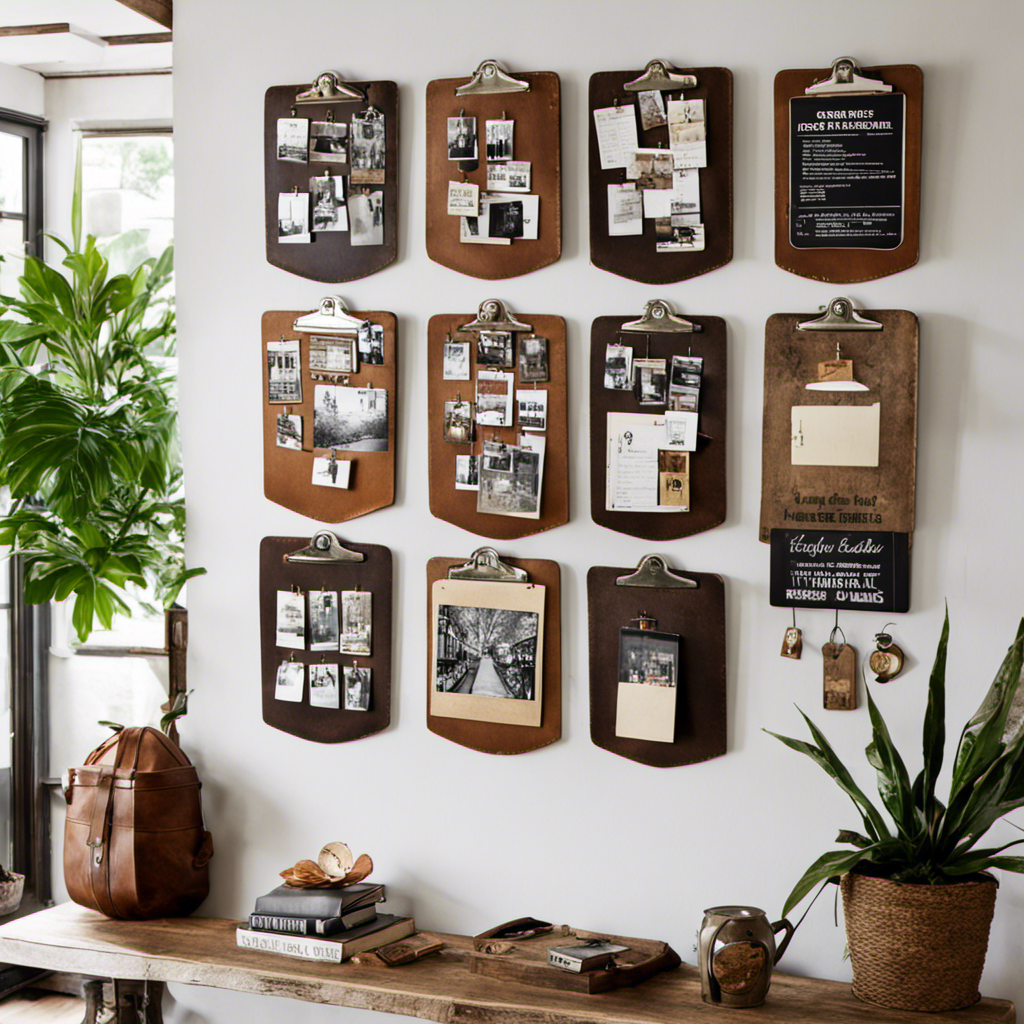
Did you realize that incorporating clipboards into your wall decorations can instantly enhance the style of any room? Translated in US English: Did you realize that incorporating clipboards into your wall decorations can instantly enhance the style of any room?
With their practicality and versatility, clipboards offer a unique and trendy way to display art, photos, or notes.
In this article, we will explore different ways to hang clipboards, providing you with creative DIY solutions and tips for styling them in your home.
Get ready to transform your walls into a personalized gallery that is both functional and visually stunning.
Key Takeaways
- Hanging clipboards as wall decor instantly elevates the style of any room.
- Select appropriate hanging hardware for secure installation and consider the overall theme and aesthetic of your home decor.
- Consider using adhesive hooks or picture hanging strips for easy installation and removal.
- Explore various ways clipboards can enhance your home decor or organizational system, such as incorporating them into office organization or using them as menu displays in restaurants.
Different Ways to Hang Clipboards as Wall Decor
You can use adhesive hooks or command strips to easily hang clipboards as wall decor. Incorporating clipboards in office organization isn’t only functional but can also add a touch of creativity to your workspace.
By hanging clipboards on the wall, you can keep important documents, to-do lists, and reminders easily accessible while also creating an aesthetically pleasing display. Additionally, clipboards can be used as photo displays, allowing you to showcase your favorite memories or inspiring images.
Simply attach photos to the clipboard using clips or magnets, and hang them on the wall. This not only adds a personal touch to your space but also allows you to easily change and update the photos whenever you want.
Choosing the Right Hanging Hardware for Clipboards
To properly display clipboards as decor, it’s important to select the appropriate hanging hardware. Proper installation techniques for hanging clipboards securely ensure that they stay in place and add a stylish touch to your home.
When choosing the right style of clipboards for your home decor, consider the overall theme and aesthetic you want to achieve. Whether you prefer a rustic, vintage look or a modern, sleek design, there are clipboards available to suit every taste.
Once you’ve selected the perfect clipboards, it’s time to choose the right hanging hardware. Look for hardware that’s durable, easy to install, and can support the weight of the clipboard. Options such as adhesive hooks, picture hanging strips, or wall-mounted hooks are ideal for hanging clipboards securely.
Remember to follow the manufacturer’s instructions for installation and use caution when handling any tools or hardware. With the proper hanging hardware and installation techniques, your clipboards will be securely displayed as stylish decor in no time.
DIY Hanging Solutions for Clipboards
When creating DIY hanging solutions for clipboards, consider using adhesive hooks or picture hanging strips for a secure and hassle-free display. These options provide a strong grip while also being easy to install and remove, making them perfect for repurposing clipboards into decorative pieces.
Adhesive hooks are versatile and can be attached to any smooth surface, such as walls or cabinets. They come in various sizes and weight capacities, ensuring that your clipboard stays securely in place.
Picture hanging strips are another great option, as they can hold heavier clipboards and provide a flush, seamless look. Simply apply the strips to the back of your clipboard and press firmly against the wall.
With these DIY hanging solutions, you can showcase your diy clipboard crafts with confidence and style.
Creative Display Ideas for Hanging Clipboards
Get creative with how you arrange and showcase your clipboards on the wall, using different sizes and orientations to create an eye-catching display.
Clipboards can be more than just functional office supplies; they can also be unique pieces of art that add personality to your home decor. Consider creating a visually appealing arrangement by combining clipboards of various sizes and orientations.
Picture this: a three-column, three-row table showcasing different clipboard styles. In the first column, you’ve a large vertical clipboard with a vibrant abstract painting. In the second column, a medium-sized horizontal clipboard displays a collection of vintage postcards. Finally, in the third column, a small square clipboard holds a mini gallery of your favorite photographs.
These unique clipboard wall displays not only serve as functional art but also allow you to easily switch out and update the contents whenever you desire.
Now, let’s explore some tips for styling clipboards in home decor.
Tips for Styling Clipboards in Home Decor
Arrange clipboards of different sizes and orientations in a visually appealing manner to create a unique and dynamic display in your home. Hang them on the wall to keep important documents within reach while adding an interesting visual element.
Incorporating clipboards into office organization adds a touch of creativity and functionality. Use larger clipboards to hold to-do lists, calendar reminders, or even inspirational quotes. Smaller clipboards can be used to display photos, notes, or memos.
Clipboards can also be repurposed as menu displays in restaurants. Attach the menu to the clipboard and hang it near the entrance or at each table. This allows for easy changes and updates to the menu, as well as adding a charming and rustic touch to the overall restaurant decor.
Get creative and explore the various ways clipboards can enhance your home decor or organizational system.
Frequently Asked Questions
Where Can I Purchase Clipboards for Wall Decor?
You can find clipboards for wall decor at various places like office supply stores, craft stores, or online retailers. They can be used creatively in home decor, and there are many DIY clipboard display ideas for wall decor.
Can Clipboards Be Hung Horizontally as Well as Vertically?
Sure! Clipboards can be hung both horizontally and vertically. This gives you endless creative possibilities for decorating with clipboards. You can display photos, artwork, to-do lists, or even a menu! Get ready to transform your space with a clipboard extravaganza!
Are There Any Specific Types of Clipboards That Work Best for Hanging as Wall Decor?
For creative ways to use clipboards as wall decor, consider DIY ideas like painting or adding fabric to customize them. Look for clipboards with sturdy hanging hooks or attach your own for easy display.
Can Clipboards Be Easily Removed From the Wall Without Causing Damage?
Removing clipboards without damage is as easy as peeling a sticker off a window. Gently lift and wiggle the clipboard to release it from the wall. Alternatively, use adhesive hooks for hassle-free hanging.
Are There Any Special Considerations for Hanging Clipboards in High Humidity Areas, Such as Bathrooms?
In high humidity areas like bathrooms, consider using alternative ways to decorate with clipboards. Try hanging clipboard alternatives like magnetic boards or adhesive hooks to display important papers without worrying about damage.
Can I Use a Clipboard to Decorate My Space?
Introducing your home decor a stylish clipboard can be a versatile and functional way to add a personal touch to any space. Whether you use it to display photos, artwork, or inspirational quotes, a well-decorated clipboard can be a unique and eye-catching addition to your home or office.
Conclusion
As you hang your clipboards as wall decor, you’ll discover a world of creativity and organization at your fingertips. The coincidental blend of functionality and aesthetics will bring a unique charm to any space.
So go ahead, choose the perfect hanging hardware, experiment with DIY solutions, and let your imagination soar as you find creative ways to display and style your clipboards.
Transform your home decor with this simple yet captivating addition.
- About the Author
- Latest Posts
Introducing Ron, the home decor aficionado at ByRetreat, whose passion for creating beautiful and inviting spaces is at the heart of his work. With his deep knowledge of home decor and his innate sense of style, Ron brings a wealth of expertise and a keen eye for detail to the ByRetreat team.
Ron’s love for home decor goes beyond aesthetics; he understands that our surroundings play a significant role in our overall well-being and productivity. With this in mind, Ron is dedicated to transforming remote workspaces into havens of comfort, functionality, and beauty.
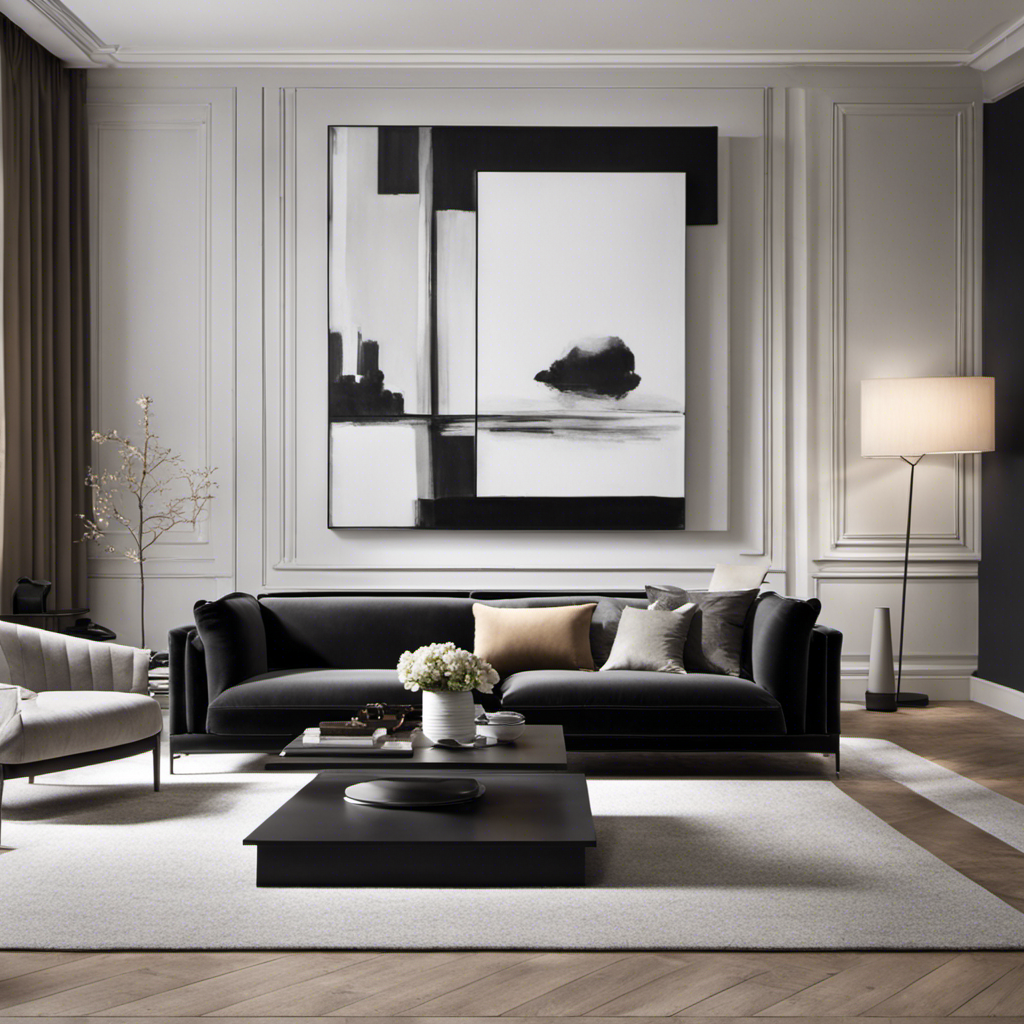
Are you feeling bored with plain walls that lack flair and character? You’ve come to the right place! In this article, we’ll show you how to turn your bare walls into beautiful pieces of art.
Discover the secrets of choosing the perfect wall decor, utilizing shelves and display units, creating captivating gallery walls, incorporating mirrors for added depth, and adding texture with wall hangings and tapestries.
Get ready to turn your bare walls into a visual masterpiece!
Key Takeaways
- Consider the size and style of your space
- Wall murals can transform a plain wall
- Framed artwork adds elegance
- Select pieces that reflect your personal style and interests
Choosing the Right Wall Decor
You should start by considering the size and style of your space when choosing the right wall decor. Whether you want to add a touch of whimsy or create a sophisticated atmosphere, there are endless possibilities to explore.
One option is a wall mural, which can transform a plain wall into a stunning focal point. Choose a design that complements your existing furniture and color scheme, and watch as your space comes to life.
Another option is framed artwork, which adds a touch of elegance to any room. Select pieces that reflect your personal style and interests, and arrange them in a way that creates visual interest.
Utilizing Wall Shelves and Display Units
Make the most of your space by utilizing wall shelves and display units. These stylish storage solutions not only help you declutter your living area but also provide a functional display for your favorite items.
Here’s why you should consider incorporating wall shelves and display units into your home decor:
-
Showcase your personality: Display your unique collection of books, artwork, or sentimental objects to add a personal touch to your space.
-
Maximize small spaces: Wall shelves and display units are perfect for small rooms where floor space is limited. They allow you to utilize vertical space effectively.
-
Create a focal point: Arrange your items creatively on the shelves to create a stunning focal point that catches the eye of anyone entering the room.
By incorporating wall shelves and display units, you can create a stylish storage solution that adds both functionality and aesthetic appeal to your home.
Now, let’s explore how to take your wall decor to the next level by creating a gallery wall.
Creating a Gallery Wall
To create a visually captivating gallery wall, arrange a variety of framed artwork and photographs in different sizes and orientations. Start by selecting artwork that resonates with you and complements the overall aesthetic of your space. Consider themes, colors, and styles that will tie everything together.
Mix and match frames to add visual interest and dimension. Opt for different materials and finishes, such as wood, metal, or acrylic, to create contrast. Play with the arrangement by placing larger pieces in the center and gradually filling in the surrounding space with smaller pieces. Experiment with different layouts by laying out the frames on the floor before hanging them.
Once you’ve achieved the desired composition, start hanging your artwork, making sure to space them evenly and at eye level. By carefully arranging artwork and selecting frames that enhance their beauty, you can create a gallery wall that’s both visually stunning and meaningful.
Now, let’s explore how incorporating mirrors and reflective surfaces can further enhance your wall decor.
Incorporating Mirrors and Reflective Surfaces
Start by choosing mirrors and reflective surfaces that complement the overall aesthetic of your space, adding depth and dimension to your gallery wall. Mirrors are a versatile choice that not only reflect light, but also create the illusion of a larger space. Reflective surfaces, such as metallic accents, can add a touch of glamour and sophistication to your wall decor.
To evoke an emotional response in the audience, consider the following:
- Maximizing natural light: Mirrors and reflective surfaces can help bounce natural light around the room, creating a bright and airy atmosphere that uplifts the mood.
- Creating a sense of luxury: Metallic accents, like gold or silver-framed mirrors, can bring a touch of opulence and elegance to your gallery wall, making it feel like a luxurious retreat.
- Adding depth and intrigue: By strategically placing mirrors and reflective surfaces, you can create visual interest and play with perspective, drawing the viewer’s eye and sparking curiosity.
Incorporating mirrors and reflective surfaces into your gallery wall not only enhances the overall aesthetic, but also adds a touch of magic and allure to your space.
Adding Texture With Wall Hangings and Tapestries
Enhance the visual appeal of your gallery space by incorporating textured wall hangings and tapestries that add depth and interest to your overall design.
Using macrame wall hangings and exploring different types of tapestries can bring a unique touch to your empty walls. Macrame wall hangings are made by knotting various threads together, creating intricate patterns and textures. They’re versatile and can be hung in various sizes and shapes, depending on your preference.
On the other hand, tapestries offer a wide range of options, from traditional to modern designs. You can choose from vibrant colors, intricate patterns, or even opt for a more minimalistic approach. Tapestries add visual interest and a sense of warmth to any space.
Frequently Asked Questions
How Can I Ensure My Wall Decor Matches the Overall Theme of My Room?
To ensure your wall decor matches your room’s overall theme, consider incorporating plants. The natural elements will bring harmony and balance to the space. Choose decor pieces that complement the colors and style of your room for a cohesive look.
What Are Some Creative Ways to Incorporate Plants Into My Wall Decor?
To incorporate plants into your wall decor, try using hanging planters for a unique touch. You can also explore vertical garden ideas to create a stunning display that adds life and vibrancy to your space.
Can You Provide Tips on How to Arrange Different Sized Frames and Artworks on a Gallery Wall?
Arrange frames and artworks on a gallery wall like a symphony conductor, blending different frame styles harmoniously. Play with sizes, textures, and themes. Let your creativity guide you as you curate a visually captivating wall display.
What Are Some Unique Ways to Use Mirrors in Wall Decor, Other Than Just Hanging Them on the Wall?
To make a statement with mirrors, consider using them as unique and eye-catching pieces in your wall decor. Think beyond hanging them and try incorporating mirrors into furniture for a stylish and unexpected touch.
Are There Any Specific Wall Hanging or Tapestry Materials That Work Best for Different Types of Rooms or Decor Styles?
For outdoor spaces, consider using wall hanging materials like weather-resistant fabrics or metal. When choosing tapestry colors for a vibrant decor style, opt for bold and bright hues that will make a statement in your space.
How Can I Incorporate Decor to Fill Up Empty Tan Walls?
Decorating tan walls can be a bit tricky, but there are ways to fill up the empty space. Add some colorful wall art or mirrors to create visual interest. Consider incorporating shelves to display unique decor pieces. Don’t be afraid to mix and match textures and patterns to bring life to your decor with tan walls.
Conclusion
In conclusion, decorating an empty wall is like adding the final brushstroke to a masterpiece. It’s an opportunity to showcase your personal style and bring life to a blank canvas.
Whether you choose to hang shelves, create a gallery wall, incorporate mirrors, or add texture with wall hangings, each option adds depth and character to your space.
So go ahead, unleash your creativity and transform that empty wall into a captivating work of art.
- About the Author
- Latest Posts
Meet Katherine, the creative enthusiast at ByRetreat who infuses her boundless passion for design into every remote workspace she crafts. With an innate sense of creativity and an eye for unconventional beauty, Katherine brings a unique and inspiring perspective to the team.
Katherine’s love for design is infectious, and her ability to think outside the box sets her apart. She believes that true artistry lies in embracing a variety of styles and mixing them harmoniously to create captivating spaces. By combining different textures, colors, and patterns, Katherine weaves a tapestry of creativity that breathes life into each remote workspace.
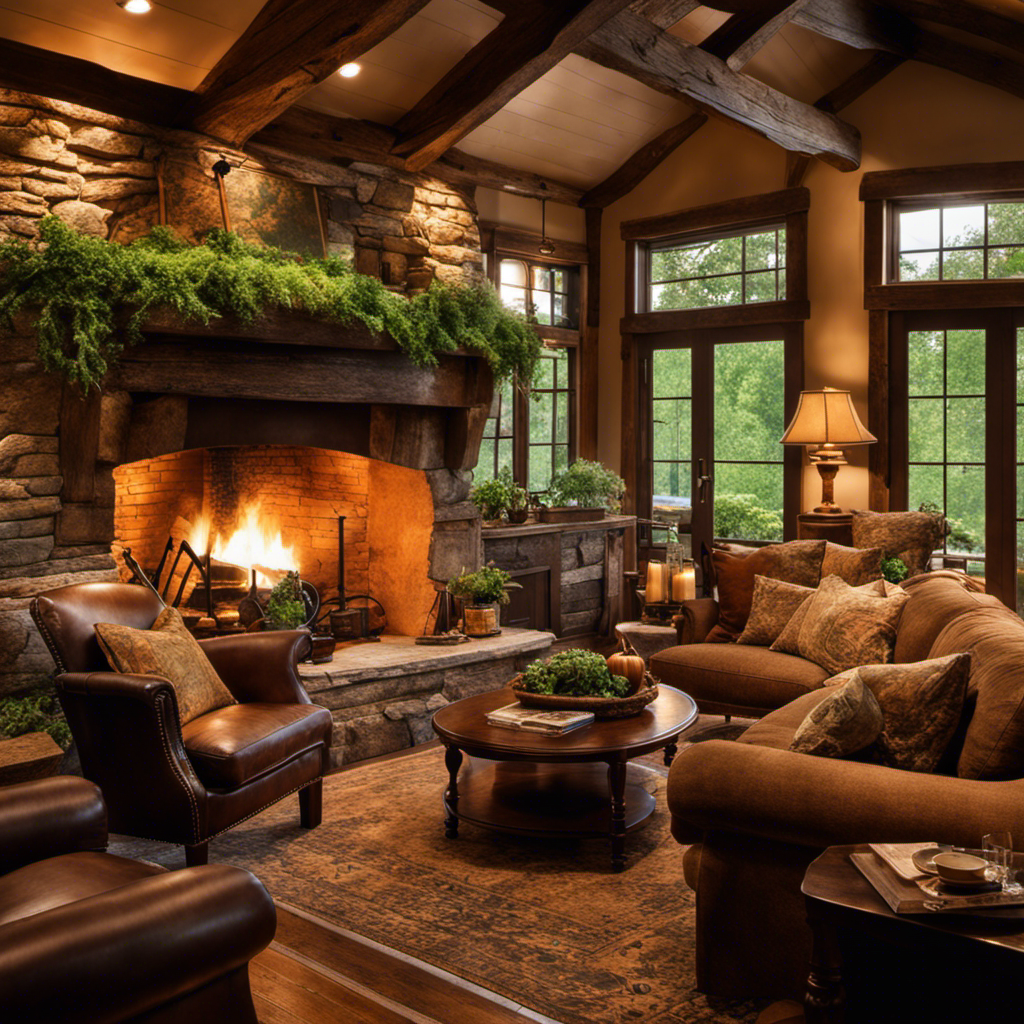
Picture entering a home that exudes a cozy sanctuary vibe, brimming with charm and whimsy. Envision being enveloped by rich hues, welcoming textures, and organic materials that add a hint of enchantment to every nook and cranny.
This is the essence of home decor like Baggen, inspired by the enchanting world of Hobbits. In this article, we will guide you on how to recreate the magic of Baggen in your own home, from choosing the right color palette to adding quirky and whimsical touches.
Get ready to transform your space into a haven of comfort and charm.
Key Takeaways
- Choose a color palette that reflects the cozy and earthy vibe of Bag End, incorporating warm base colors and pops of bold colors for contrast.
- Layer fabrics with different textures and mix and match patterns to create visual interest in your decor.
- Embrace natural elements like wood, stone, and plants to create a space that feels connected to the earth.
- Add quirky and whimsical touches through DIY projects, unique furniture pieces, and vibrant accent pieces to bring character to your space.
Choosing the Right Color Palette
You should start by selecting a color palette that reflects the cozy and earthy vibe of Bag End. To create a minimalist look inspired by the iconic home of Bilbo Baggins, consider exploring bold and vibrant colors.
Begin by choosing a base color that evokes a sense of warmth and comfort, such as a rich earth tone like deep brown or warm beige. This will serve as the foundation for your color scheme.
Next, add pops of bold colors like forest green or deep red to create visual interest and contrast. These bold hues will bring life and energy to your space, while still maintaining a cozy and earthy atmosphere.
Lastly, incorporate natural textures and materials like wood, stone, and woven textiles to enhance the overall cozy and organic aesthetic.
Incorporating Cozy Textures
To create a cozy atmosphere in your space, try incorporating soft textures like plush blankets and velvety cushions. These elements not only add visual appeal but also provide a tactile experience that invites you to relax and unwind. Here are some tips to help you incorporate cozy textures into your home decor:
-
Layering fabrics: Mix and match different textures by layering throw blankets and pillows of varying materials, such as faux fur, knits, and velvet. This adds depth and warmth to your space.
-
Mixing patterns: Don’t be afraid to mix and match patterns to create visual interest. Pairing a bold geometric pattern with a subtle floral print can create a harmonious balance in your decor.
-
Adding textured rugs: Incorporate rugs with plush textures like shag or sheepskin to add a soft and luxurious feel to your floors.
-
Using curtains and drapes: Opt for curtains or drapes made from thick, heavy fabrics like velvet or brocade. This not only adds privacy but also enhances the cozy ambiance of your space.
By incorporating these cozy textures, you’ll create a warm and inviting atmosphere in your home, perfect for curling up with a good book or enjoying a cup of tea.
In addition to cozy textures, embracing natural elements can further enhance the overall ambiance of your space.
Embracing Natural Elements
Embrace the beauty of nature by incorporating natural elements into your space, such as wooden furniture, potted plants, and stone accents. By using plants in your home decor, you can bring a sense of tranquility and freshness to any room. Not only do plants add visual appeal, but they also purify the air and create a calming atmosphere. When it comes to furniture and accessories, utilizing natural materials like wood and stone can enhance the overall aesthetic and create a warm and inviting ambiance. Imagine sitting on a comfortable wooden chair surrounded by lush greenery, with a stone accent table holding a cup of tea. It’s a perfect blend of nature and comfort, creating a space that feels connected to the earth.
| Wooden Furniture | Potted Plants | Stone Accents |
|---|---|---|
| Oak Dining Table | Fiddle Leaf Fig Tree | Marble Coasters |
| Teak Bookshelf | Snake Plant | Granite Vase |
| Walnut Coffee Table | Succulent Arrangement | Slate Candle Holder |
| Birch Nightstand | Monstera Deliciosa | Limestone Wall Art |
Incorporating these natural elements into your home decor not only adds visual interest but also brings a sense of harmony and serenity. So go ahead, embrace the beauty of nature and create a space that feels like a peaceful oasis.
Adding Quirky and Whimsical Touches
Let your space come alive with quirky and whimsical touches, adding a playful and unique charm to your home. Transform your living space into a whimsical wonderland by incorporating DIY projects and unique furniture pieces.
Here’s how you can achieve it:
-
DIY projects: Get creative and craft unique decor pieces like painted mason jars, hand-painted throw pillows, or a custom-made wall mural. These DIY projects will add a personal touch to your home and showcase your artistic side.
-
Unique furniture pieces: Look for one-of-a-kind furniture pieces that bring character to your space. Think vintage-inspired chairs, a funky coffee table, or a statement bookshelf. These unique furniture pieces will instantly become conversation starters and give your home a distinct personality.
-
Colorful accents: Add pops of color with vibrant accent pieces like bright rugs, colorful artwork, or funky lampshades. These playful accents will inject energy and liveliness into your space.
-
Whimsical details: Don’t forget the smaller details! Incorporate whimsical touches like fairy lights, quirky wall decals, or whimsical wallpaper to create a magical atmosphere in your home.
With these quirky and whimsical additions, your home will become a haven of creativity and imagination. Let your personality shine through and enjoy the delightful charm of your newly transformed space.
Creating Functional and Organized Spaces
Organize your space efficiently by utilizing storage solutions that maximize functionality and keep your belongings easily accessible.
When it comes to maximizing small spaces, incorporating multi-functional furniture is key. Think of pieces that can serve multiple purposes, such as a coffee table with hidden storage compartments, or a sofa that can be converted into a guest bed. These clever furniture options not only save space but also add versatility to your home decor.
Consider wall-mounted shelves or floating cabinets to make use of vertical space, freeing up floor area. Don’t forget about the power of organization. Invest in bins, baskets, and drawer dividers to keep everything in its place.
Frequently Asked Questions
What Are Some Tips for Finding Unique and Eccentric Home Decor Pieces to Add a Touch of Quirkiness to My Space?
Looking to add some quirkiness to your space? Try these tips for thrift shopping and DIY home decor projects. Find unique and eccentric pieces that will make your home feel like Baggend.
How Can I Create a Functional and Organized Space Without Compromising on Style?
To create a functional and stylish workspace, maximize storage in a small living space. Utilize vertical shelving, multipurpose furniture, and clever organization systems. Remember, a place for everything and everything in its place.
Are There Any Specific Natural Elements That Work Particularly Well in Creating a Baggend-Inspired Home Decor?
To create a Baggend-inspired home decor, incorporate specific natural materials like wood and stone. DIY projects such as making your own rustic furniture or creating a cozy fireplace can further enhance the whimsical charm of your space.
Can You Suggest Some Ways to Incorporate Cozy Textures Into My Home Decor Without Making It Look Cluttered?
To incorporate cozy textures into your home decor without clutter, try adding soft throw blankets and plush pillows. Opt for natural materials like wool and velvet for a warm and inviting feel.
What Are Some Common Mistakes to Avoid When Choosing a Color Palette for a Baggend-Inspired Home Decor?
When choosing a color palette for a Baggend-inspired home decor, common mistakes to avoid include using too many vibrant colors or neglecting to create a sense of warmth. The best color combinations are earthy tones with pops of rich, jewel-like hues.
Can Primitive Salt Box Decor Be Incorporated into a Baggend-themed Home Decor?
Yes, building primitive salt box decor can be seamlessly incorporated into a Baggend-themed home decor. The rustic and earthy elements of primitive salt box decor perfectly complement the cozy and whimsical feel of a Baggend-inspired home. Add some handmade wooden pieces and earth-toned textiles to complete the look.
Conclusion
So, there you’ve it – your guide to creating a home decor that would make even a hobbit feel right at home!
By choosing the right color palette, incorporating cozy textures, embracing natural elements, adding quirky touches, and creating functional spaces, you can transform your space into a Bagend-inspired haven.
So go ahead, embrace your inner hobbit and let your creativity run wild. Your home will be the envy of all Middle-earth!
- About the Author
- Latest Posts
Meet Katherine, the creative enthusiast at ByRetreat who infuses her boundless passion for design into every remote workspace she crafts. With an innate sense of creativity and an eye for unconventional beauty, Katherine brings a unique and inspiring perspective to the team.
Katherine’s love for design is infectious, and her ability to think outside the box sets her apart. She believes that true artistry lies in embracing a variety of styles and mixing them harmoniously to create captivating spaces. By combining different textures, colors, and patterns, Katherine weaves a tapestry of creativity that breathes life into each remote workspace.
-

 Decor2 weeks ago
Decor2 weeks agoMaximalist Decor Explained: Embrace More Style
-

 Vetted2 weeks ago
Vetted2 weeks ago15 Best Foot Massagers for Neuropathy to Soothe Your Feet and Relieve Discomfort
-

 Vetted3 weeks ago
Vetted3 weeks ago15 Best Sports Laundry Detergents for Keeping Your Activewear Fresh and Clean
-

 Vetted3 weeks ago
Vetted3 weeks ago15 Best Tall Toilets for Seniors That Combine Comfort and Safety
-

 Vetted4 weeks ago
Vetted4 weeks ago15 Best Dish Scrubbers to Keep Your Kitchen Sparkling Clean
-

 Vetted3 days ago
Vetted3 days ago15 Best Cleaners for Fiberglass Showers to Keep Your Bathroom Sparkling Clean
-

 Decor4 weeks ago
Decor4 weeks agoWhat Is Eclectic Home Decor
-

 Vetted1 week ago
Vetted1 week ago15 Best Organic Pest Control Solutions for a Naturally Pest-Free Home





